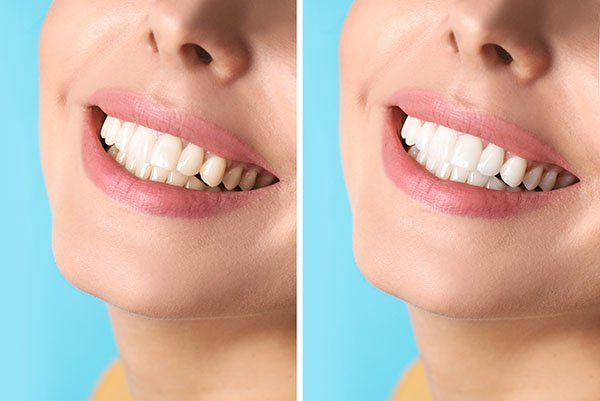 Cosmetic dental services often involve using tooth-colored restorations to restore damaged, decayed, or discolored teeth. Restorations, like crowns, can be made from materials like gold, silver, and metal alloys, but these materials look nothing like natural teeth. Most patients prefer restorations made from materials that share properties with real teeth, like porcelain, ceramics, and composites. Cosmetic dental services focus on addressing dental issues in a way that does not negatively impact your smile.
Cosmetic dental services often involve using tooth-colored restorations to restore damaged, decayed, or discolored teeth. Restorations, like crowns, can be made from materials like gold, silver, and metal alloys, but these materials look nothing like natural teeth. Most patients prefer restorations made from materials that share properties with real teeth, like porcelain, ceramics, and composites. Cosmetic dental services focus on addressing dental issues in a way that does not negatively impact your smile.
Cosmetic dental services match the color of natural teeth
Let us take a look at a few of the cosmetic dental services that typically involve using restorations that can be color-matched with the rest of the patient's teeth.
1. Composite bonding
Composite bonding is a versatile treatment that can be used to address issues like tooth decay, discoloration, and damage to teeth structures. It is a non-invasive procedure that does not involve making any permanent alterations to the tooth being treated. The composite used is color-matched with the rest of the patient’s teeth, so the repairs do not stick out when the patient smiles.
The procedure involves using an etching solution to roughen the tooth’s exterior and then applying the composite to it. Roughening the exterior of the tooth enables the composite to adhere better.
The composite is typically applied in layers to create a stronger restoration. Then, the dentist molds it as desired before hardening it with a blue light to complete the treatment. It all takes about 45 minutes or less, and the patient can leave the clinic with their smile restored.
2. Crowns
Crowns are even more versatile than composite restorations, and they serve cosmetic and restorative purposes. Crowns are designed to look like natural teeth, and those used for cosmetic treatments are matched with the color of the patient’s teeth. These crowns are typically made from materials that share teeth's natural color and their translucent nature, like porcelain.
Installing a crown requires removing enamel from the tooth being treated so the crown fits better. Unfortunately, the process cannot be reversed in the future because enamel does not grow back. That means the tooth will always need cosmetics, like a crown, to serve as its artificial enamel.
The process of getting a crown usually takes two trips to the dentist. During the first visit, the dentist prepares the patient’s tooth and takes an impression of it. The impression is then sent to a lab where technicians make dental restorations like crowns. It takes about two weeks for the custom crown to get back to the dentist.
During the first visit, the patient gets a temporary crown to protect their teeth while waiting for their custom restoration. The temporary crown comes off during the second visit, and the custom crown is cemented into place.
We make repairs look natural
Our dentist has years of experience making a cosmetic dental restoration blend in with the rest of your teeth. Give us a call at 972-536-6535 or visit our Irving location to explore treatment options.
Request an appointment or call Cottonwood Dental at 972-536-6535 for an appointment in our Irving office.
Related Posts
Various cosmetic dental services can be used to replace missing teeth, restoring the appearance of your smile. Most people lose at least one of their teeth at some point in their life, and it needs to be replaced as soon as possible. Bone tissues in the jaw start to break down when they stop getting…
Cosmetic dental services can be used to repair worn-down teeth. Teeth can be eroded by acids in the mouth and the bite forces generated when chewing. They can also become damaged due to habits like chewing on ice or biting on fingernails.Worn-down teeth often lead to issues like toothaches because the more sensitive inner layer…
Cosmetic dental services, like composite bonding or the placement of restorations, can help fix unnatural gaps between your teeth. Medically termed diastemas, these gaps can impact how your smile looks and the way that you feel about your appearance.A gap between teeth is one of the things that most people notice when you open your…


